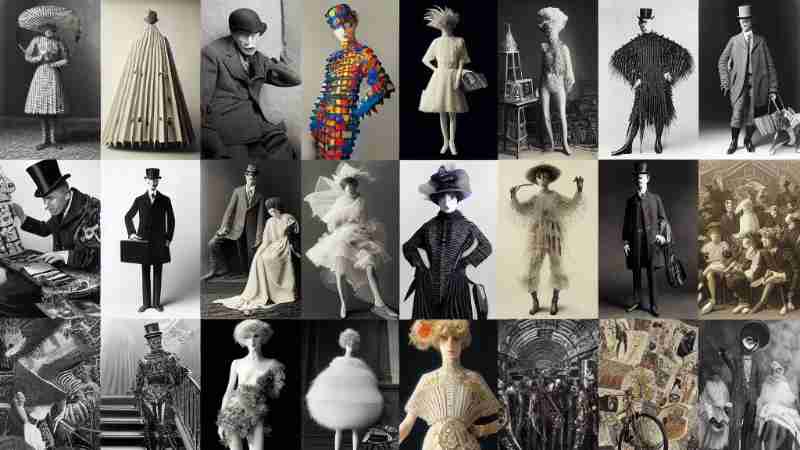Avant-garde fashion, an unconventional and boundary-pushing movement, has shaped the way we perceive and wear clothes for over a century.
In this article, we’ll look into the evolution of avant-garde fashion, from its inception to the present day, and explore how it continues to inspire and challenge us.
Contemporary avant-garde fashion designer, Barbara í Gongini, guides us in our exploration of the term.
Origins of Avant-Garde Fashion (early 20th century)
The avant-garde movement began around the early 20th century, with artists, designers, and thinkers rejecting societal norms and exploring innovative ideas in various fields.
In fashion, this translated into unconventional designs that challenged traditional silhouettes and materials, paving the way for future trends.
Mid-Century Innovations (1950-1960)
During the mid-20th century, designers like Yves Saint Laurent and Pierre Cardin continued to push boundaries with their radical creations, such as unisex garments and futuristic shapes.
Avant-Garde Fashion (1970-1980)
Punk and new wave movements influenced avant-garde fashion during this period, with designers like Vivienne Westwood and Jean-Paul Gaultier embracing rebellion and experimentation.
Present day avant-garde
Today, avant-garde fashion continues to shape the industry, with designers like Rei Kawakubo of Comme des Garçons and Rick Owens pushing the boundaries of form, color, and texture.
As opposed to those who merely imitate the trend, we try to craft pieces with a particular message. In my eyes, the very non-compromised fashion is the most relevant nowadays.
Barbara Í Gongini
The influence of avant-garde fashion extends beyond traditional fashion channels, with social media playing a pivotal role in promoting and popularizing its boundary-pushing designs. The digital platform offers unprecedented exposure for designers and their unconventional creations, allowing them to connect directly with consumers and challenge societal norms on a global scale.
The enduring influence of avant-garde fashion on our sartorial landscape stems from its relentless pursuit of innovation and rejection of societal norms. As we move forward, this groundbreaking movement will continue to challenge, inspire, and shape the way we view and wear clothes.
What used to raise eyebrows is now perceived as progressive and forward thinking.
